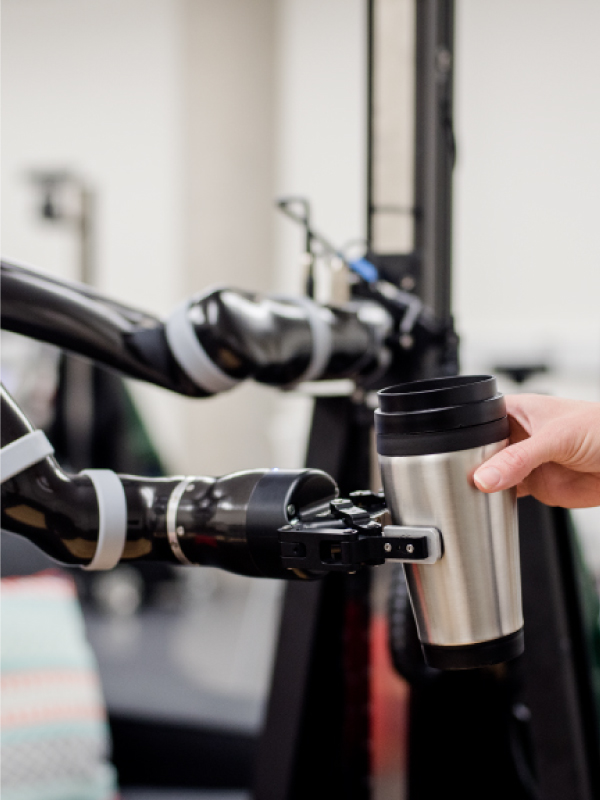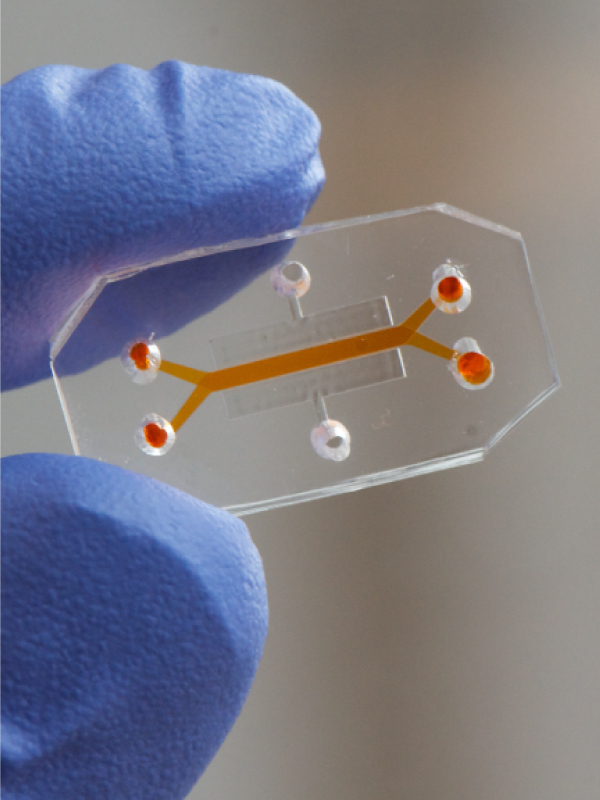Awe-inspiring experiments, tiny devices and otherworldly materials are just a few of the fascinating things on display in Texas Engineering laboratories.
Turbulent Flame
This chaotic flame, which is burning jet fuel in Noel Clemens’ Flowfield Imaging Laboratory, helps to assess the sooting characteristics of new types of fuels, like those derived from natural gas. Clemens, who serves as chair of the Department of Aerospace Engineering and Engineering Mechanics, says the soot that remains unburned as it leaves the flame creates smoke in the atmosphere, and that smoke can present a health hazard to people living near military bases and airports.

Poli the Robot
Inside the Cockrell School’s Socially Intelligent Machines Lab, led by electrical and computer engineering associate professor Andrea Thomaz, a new robot named Poli (pronounced Paul-ee) is coming to life. Built for practicality, Poli was designed with one arm that can slide up and down on a pole for better manipulation of its workspace. Thomaz’s vision is to develop robots that can help people in need with simple daily tasks, such as doing the dishes or delivering blankets, in hospitals or in homes.

Gut-on-a-Chip
This groundbreaking device developed by biomedical engineering assistant professor Hyun Jung Kim in collaboration with researchers at Harvard’s Wyss Institute, is the first “gut-on-a-chip,” a technological breakthrough that uses a human’s microbiome to mimic the gastrointestinal tract environment to help diagnose and treat intestinal diseases, such as Crohn’s disease. The thumb-nail-sized synthetic micro-gut is able to emulate peristalsis, the rhythmical contractions that happen in our gut as food passes through, and deliver more accurate information than other commonly used biomedical testing platforms.
![]()
Silicon Nanofabrication
Among many other areas of focus, the NSF-funded NASCENT Nanosystems Engineering Research Center, led by mechanical engineering professor S.V. Sreenivasan and chemical engineering professor Roger Bonnecaze, is adapting silicon nanofabrication processes to the world of flexible electronics and photonics – technologies with broad and important societal applications including displays, mobile devices and nanoparticles for drug delivery. Here, a glass substrate with sub-100 nanometer etched patterns is assessed before being loaded onto a roll-to-roll patterning tool that can transfer the etched structures into flexile plastic films.
